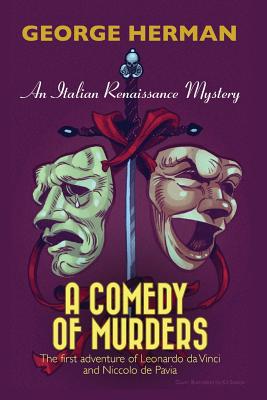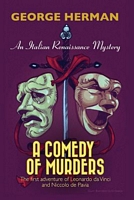- Welcome to FictionDB, Guest
- | My Account
- | Help

A Comedy of Murders — George Herman

-
Published:
Jul-1994 (Hardcover) -
Formats:
Print / eBook / Audio -
Series:
-
Main Genre:
Historical Mystery -
Time Period:
European Renaissance (1300-1700) -
Pages:
355 -
Rating:
-
Purchase:
-
Share:
Twenty-Seven Ways to Commit Murder. It is 1498 and in the castle of Ludovico Sforza, Duke of Milan, there have been a number of assassination attempts made on his life. The latest happens when the Duke and his court visit the Certosa Monastery after a hunting trip. A young man living at the Monastery, Niccolo da Pavia, intercepts the would-be assassins, saving the Duke's life. In gratitude the Duke offers Niccolo a place in his court. Niccolo dreams of experiencing the world outside the Monastery so he readily accepts. Leonardo da Vinci is Artist-in-residence to the Duke where he paints, arranges entertainments and designs war machines and is allowed to dissect bodies. Niccolo's insatiable curiosity leads him to the tower where Leonardo has his studio. A strong friendship is established and as the bodies pile up, Niccolo and Leonardo work together to uncover the identity of the assassin. This mysterious Griffin, as the assassin is known, continues to plague the court with a series of murders that include: cardinals, members of the court, and even castle workers. Leonardo, using his forensic skills to dissect the bodies of the victims, uncovers the truth behind the murders just before the French and Cesare Borgia invade the castle. Leonardo and Niccolo must flee for their lives. The Italian Renaissance is a period of artistic brilliance, sexual decadence, political intrigue and religious fanaticism. Does that world sound familiar? It would appear that history does indeed repeat itself. George Herman captures all of this with humor in his first mystery novel, A Comedy of Murders.
Genres
Sub-Genres
Click on any of the links above to see more books like this one.


